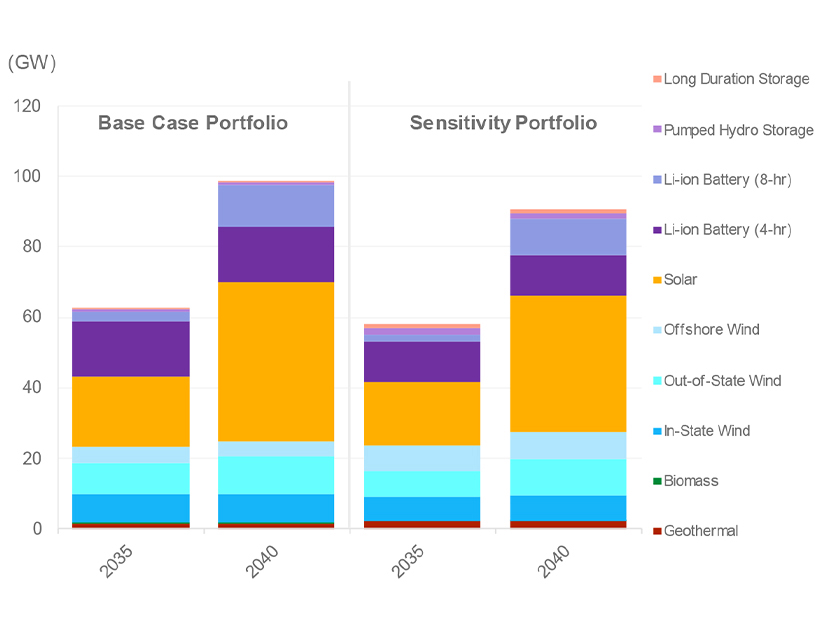A California electric resource portfolio that incorporates 63 GW of clean energy and new storage by 2035 has received approval from state regulators and will be sent to CAISO for use in its 2025/26 transmission planning process.
The California Public Utilities Commission voted 4-0 on Feb. 20 to approve the portfolio, which as modeled reaches 99% clean energy serving retail load by 2035. The portfolio projects a decrease in natural gas generation in the CAISO system, with a 71% drop from 2026 to 2035 and an 80% reduction by 2040.
“This is an extremely promising glimpse of a possible future,” Commissioner John Reynolds said before the vote.
The electric resource portfolio is an annual exercise for the CPUC, which described it as a “key input” into CAISO’s transmission planning. In addition to a “base case” portfolio, the commission approved a “sensitivity portfolio” that incorporates a larger amount of long-lead time resources, such as geothermal energy, offshore wind and long-duration energy storage.
Wind Study
The commission’s decision also asks CAISO to study “but not yet trigger the investment in new transmission to support some out-of-state wind and Northern California wind” outside of the CAISO balancing authority area.
The decision noted that the amount of out-of-state wind on new transmission in the 2025/26 portfolio has increased to 9 GW in 2035, up from 6 GW in 2034 in last year’s portfolio. Sources of out-of-state wind include New Mexico and Wyoming.
“The new amounts, if fully developed, will require additional transmission beyond those projects that are already approved and in development, including SunZia, SWIP-North and TransWest,” the CPUC said in its decision.
The additional transmission could be “complex to accomplish” and “require regional cooperation,” the decision said.
Another issue discussed in the decision is the deliverability of energy from offshore wind (OSW) along the Northern California coast. Most deliverability on existing Northern California transmission has been allocated to resources now in the interconnection queue, the CPUC said, pointing to battery storage projects in particular.
“If … CAISO does not reserve some deliverability for OSW and ensure there is adequate transmission available for that deliverability, it will all be used by the storage in the queue,” the CPUC said. But adding transmission for OSW runs the risk of overbuilding “at considerable cost,” if all the resources are not developed.
The decision directs CPUC staff to work with CAISO to identify storage projects with transmission plan deliverability that could have the biggest impact on OSW in the area.
Building the Portfolio
The CPUC built its electric resource portfolio using information from 2022 integrated resource plans filed by utilities under its jurisdiction, plus additional identified resources.
The base case is “reliability- and policy-driven,” according to the CPUC. For example, it factors in a greenhouse gas emissions target for the electricity sector of 25 million metric tons (MMT) by 2035.
And the two study years for the base case portfolio, 2035 and 2040, satisfy the 0.1 loss of load expectation (LOLE) standard. The process also includes busbar mapping, which identifies locations of electricity generation and storage.
Along with its base case portfolio, the CPUC also typically develops a sensitivity portfolio as a “reasonable alternative” for CAISO to evaluate.
Last year’s sensitivity case was a high natural gas retirement scenario, which the CPUC said was “designed to assist in planning for the potential future retirement of fossil-fueled resources.”



